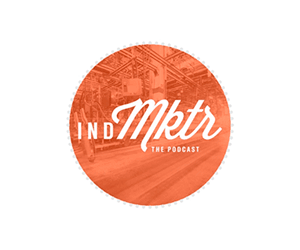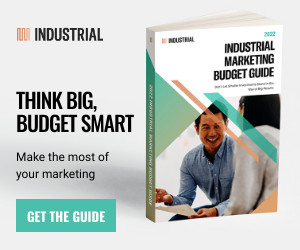As industrial marketing professionals we are still learning about how to leverage big data for audience targeting, audience segmentation, and intent. Targeting is simple at its core — defining a specific customer prospect audience — but wicked hard in execution and practice. In the industrial B2B sectors, our universe of buyers is undoubtedly small, so having the tools and experience to accurately define, find and target your ideal customers is even more important.
Nowadays, being on the Internet is table stakes, and in order to break free of the noise and find the customers that need your industrial products and services, you will have to be better at finding and communicating with your audience.
The world of audience targeting is quickly evolving, so you shouldn’t hesitate to invest in a new tactic because you’re unsure it will work. If you still aren’t sure where to start, we’re offering up three ways to get started with better audience targeting to help you get more qualified leads.
1. Start With Intent Data for Audience Targeting
We suggest you start with the first-party data, what you can glean about the buying trends of your customers from your website data, your CRM, and your sales team.
What does their buying journey look like? These people have a certain job function, and they are frequently on your site, and they bought something from you within a stipulated timeframe. Just like that you have a filtered list of targeted individuals or companies to think about. So that’s a great way to get started.
If you have not been using lead scoring, it can be a great source for intent data. Sit down and identify activities and assets that indicate higher levels of buying intent within your owned universe. There’s no better first-party data than your own customer database and buying history.
Once you have your internal picture, then do a free trial of third-party data from Bombora or 6sense or a similar vendor to help supplement that. They provide intent data and sales intelligence for your target market accounts and decision makers. Dedicate some budget this year to one of these tools for six months; it’s the easiest way to figure out how much value the tool can provide.
2. Take Baby Steps into Account Based Marketing
Taking “baby steps” into account-based marketing (ABM) is going to mean a lot of different things to different people. But you do not need a full, expensive ABM platform to get started. Do you have an ideal customer base? Target sales efforts around a collection of individuals at a known group of companies. Leverage your CRM system and a dedicated sales effort, and mix that with digital advertising and content marketing to surround those contacts with your key messaging.
If you have a list of companies that your sales team can go after, then you can use one of the tools we mentioned earlier to find known contacts and known websites where people at those companies spend time. Then you buy ads there, or test a service that will place ads for you.
Tools can help you uncover contacts and surround those contacts with messaging, whether it’s HubSpot, emails and content marketing, ads through a programmatic server, SMS, or direct mail pieces. Use all the touch points that you have access to. The more personalized you can be in your direct messaging the better.
People respond to personalized messaging. The more directly you target those companies, the easier it is to make those experiences more personalized. Find a tool that will allow you to uncover contacts at those companies. Then surround them with personalized, key messages.
3. Revisit Your Buyer Personas
A good buyer persona is going to be very detailed. Do you know this person’s typical goals in their position? Some of your personas are going to be more concerned with machine uptime and overall equipment efficiency. Some are going to be more concerned with the P&L or ROI, or maybe maintenance. Some positions are more likely to include people who want to be the technology leaders at their company.
Do you know their objections to buying your product or service? That will vary, too. Or their motivations? The advent of the industrial buying committee has made industrial marketing more complicated. But if you know who is on a buying committee at your target company, you can go back to the tools and tactics we have mentioned to execute your plan.
When was the last time you revisited your current customers to see what’s changed in their world? Customers can give you insight into their needs, and they also can provide insight into your strengths and areas for improvement.
Proper Audience Targeting Allows You to Cut Through the Noise
It’s increasingly more important to know who your key audience is and what types of messaging you should be using. We are bombarded with digital marketing. The messages that sell are the ones that speak directly to the challenges of the people hearing them. And that’s what all of this targeting really allows us to do in a world of so much noise.
Use 2023 to learn more about your audience and ideal client profiles and start putting audience targeting into profitable action for your company.
Listen to the Podcast to Learn More About Audience Targeting
Tune in to Episode 40 of the Industrial Marketer podcast to learn more about how audience targeting can be applied to manufacturer marketing.
Subscribe to the Industrial Marketer Podcast
The Industrial Marketer podcast comes out once a month. To subscribe, visit our Buzzsprout show page and select your podcast platform of choice.
And if you have any ideas for topics you’d like us to cover on the podcast — or here on the Industrial Marketer website — send us a message on Facebook or Twitter and let us know!




